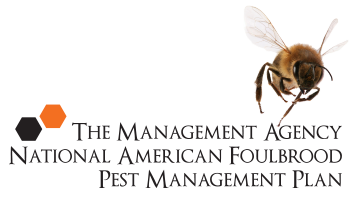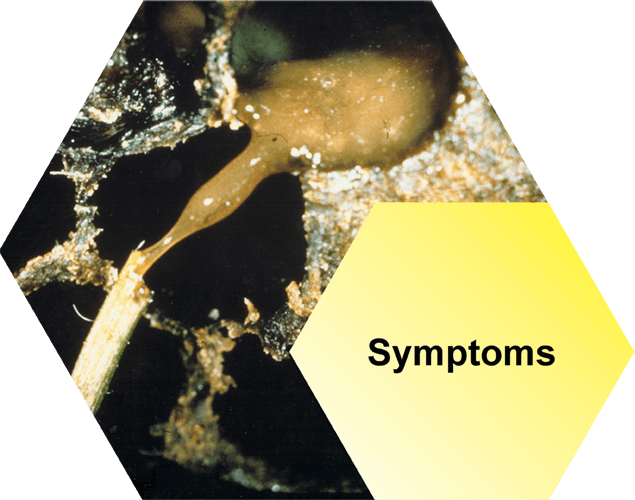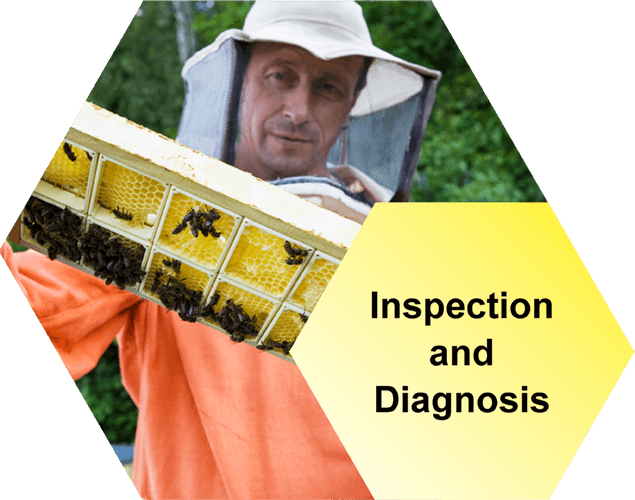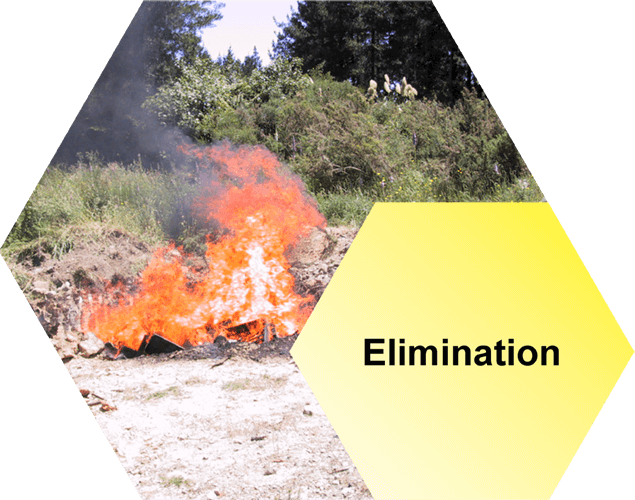Ropiness test
A guide to the ropiness test
Contents of suspect cells, and especially cells containing larvae or pupae that are coffee-brown in colour and have no body segmentation, can be diagnosed for AFB using the ropiness test.
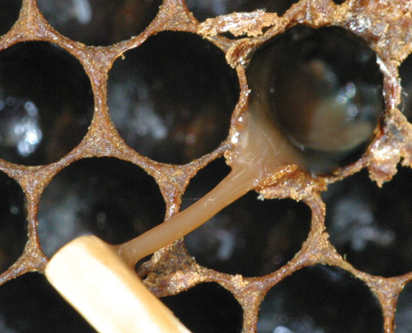
To perform the test, insert a small stick (e.g. end of wooden matchstick) into the suspect larva or pupa. Use the stick to mix up the brood remains, and then remove the stick slowly. If the suspect larva/pupa has AFB, the tissues will draw out in a fine thread between 10mm and 30mm long (Fig. 29). The thread will be of an even colour and consistency and will “snap back” when the thread breaks.
Potential problems with the ropiness test
The ropiness test is not always a definitive diagnosis for AFB, however.
Diseased larvae or pupae in the early stage of decomposition, and those that have started to dry, may not “rope out” to any noticeable extent. As well, diseased larvae or pupae that have dried down completely to scale will not rope out, since there will not be any liquid material left in the cell.
It is important to use a dry stick with a rough surface to carry out the test. Remains of brood with AFB may not stick well to smooth or wet material like grass stems, and may therefore not rope out as far as they would normally.
If the larval material ropes out, but not as far as described above, look for other larvae and pupae that may show symptoms. If none are found, arrange to send the suspect larva to a laboratory to be tested (see laboratory diagnosis of AFB), or mark the hive and check it at regular intervals for six months or more.
Use the ropiness test to identify suspected AFB larvae and pupae.
Take the AFB 5 minute quiz
How well do you know what you need to know about AFB and beekeeping? Take our short quiz and find out.
Videos
Our videos cover everything from your legal obligations to how to recognise AFB, collecting cell and bee samples and more.
Symptoms
There’s a lot of good information here, telling you everything you need to know about recognising AFB: the visual symptoms, smell of AFB and more.
Inspection and Diagnosis
Successfully eliminate AFB by telling the difference between symptoms of AFB and other brood diseases in the hive. We tell you the best methods for inspecting your hives.
The Law
New Zealand beekeepers have a number of legal obligations that must be met regarding AFB disease. Read the shortened list in summary, here.
Elimination
Most hives become infected because bees, honey or equipment have been put into a hive from another hive that is infected with AFB. Lower your chances of an AFB infection by reading this section.
AFB Recognition Course Info
Find out when the next AFB Recognition and Competency Courses, or Refresher Courses are available. These are held throughout the year in various New Zealand locations across the South Island and North Island.
The AFB App
Follow the link below to open the App. Once open to save to your device you need to bookmark the URL on your phone so you can find it easily again. Please click here to open.
